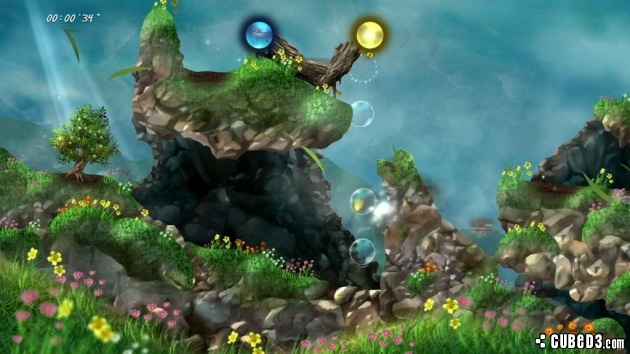Storm (PC) Review
By Javier Jimenez  08.07.2013
08.07.2013

Platforming on a 2D plane has made a huge comeback from the pits it wallowed in during the rise of the first-person shooter. Between Donkey Kong Country 3 and New Super Mario Bros. DS stand 10 years during which, it's safe to say, platformers rarely saw the light of day. Nintendo 64, PlayStation, Dreamcast, PlayStation 2, GameCube, Xbox… these weren't systems that wholeheartedly embraced the concept of running on a horizontal plane and jumping over pits. A bright light here and there, but overall these were the domains of RPGs, 3D platforming, shooting, action-adventures, and so on...This latest Beyond the Cube takes a look at Storm on PC, something potentially very tasty indeed.
However, times have changed, and so has the development landscape. Whereas consoles pushed 3D for well over a decade, 2D games have come back strong, largely thanks to new development environments and markets. Indie development, flash-based games, smartphone titles, and the rise of handheld systems has encouraged a return to 2D gaming.
Something has risen in the tracks of the march of the 2D platformer, though. They are platformers that rely less on running and jumping and more on physics and puzzles. Games like Fluidity, Spewer, and Lost Winds are less about memorising jump arcs and more about playing with interesting physics in order to reach a goal.
That's where Storm falls, very squarely, in the realm of physics platforming. It has all the requisites: fluid dynamics, wind dynamics, lightning jumps. Smash rocks with lightning, fill pits with water, and combine base abilities together, or with environmental objects such as bubbles, in order to move the seed from beginning to end of level.
Far from being completely sedate, the experience at times requires quick reflexes. The seed - the "main character" of the game - may roll down a slope very quickly, requiring a well-timed lightning strike to make it jump over a pit. It's also not completely simple, either; one level may require rolling the seed down a slope with wind into a pit covered by a log (strike it with lightning), then into another that needs to be filled with water that causes it to float, then wind to push it over a ledge, then into another pit of bubbles (fill it with water), which causes the seed to float up into the air where it must be pushed with wind to the final goal.

Excuse us, we need to take a breath…you get the idea! Storm does require some thought and skill to play, though it does not employ the most original game mechanics. In fact, aside from the lightning strike, the wind and water physics are featured prominently in several other indie platformers, which leaves players wondering how Eko and Neko intend to set this game apart from other indie platformers.
The most obvious answer to that is 'art style and music.' On the music front, Storm features a very (VERY) ambient, mellow soundtrack - it is relaxing environmental stuff, and honestly nice. The visual art front is a different matter, though, and more of a mixed bag. Storm aims for a storybook feeling. Certain elements hit that mark - the hand-drawn flowers that sway in the foreground look convincing, like something seen in the pages of a child's picture book, yet other elements, such as background mountains and foreground hills, sometimes miss due to hard edges and pseudo-lighting that give almost a pseudo-3D appearance that calls to mind Donkey Kong Country. Like one of those old fashioned 3D pictures, if crossing and blurring the eyes, the picture almost meshes just right. If looking too close at something - say a log - the hard edges look very much like stickers slapped on a page.

Cubed3 Rating
Good
Is Storm worth players' time? Well, it depends on what is being looked for. It's a competent 2D puzzle platformer with some satisfying level design. It doesn't do anything groundbreaking or innovative, yet it's sold at a reasonable price. Given how many levels it has - several dozen plus different gameplay modes for each - there is a decent amount of gameplay. While it doesn't burn down the house, if a relaxing platformer is what tickles the fancy, then a lot worse could do be done than Storm.
Comments
Comments are currently disabled

 Sign In
Sign In Game Details
Game Details
 Out now
Out now  Out now
Out now  Out now
Out now  Out now
Out now  Subscribe to this topic
Subscribe to this topic Features
Features






 Top
Top

